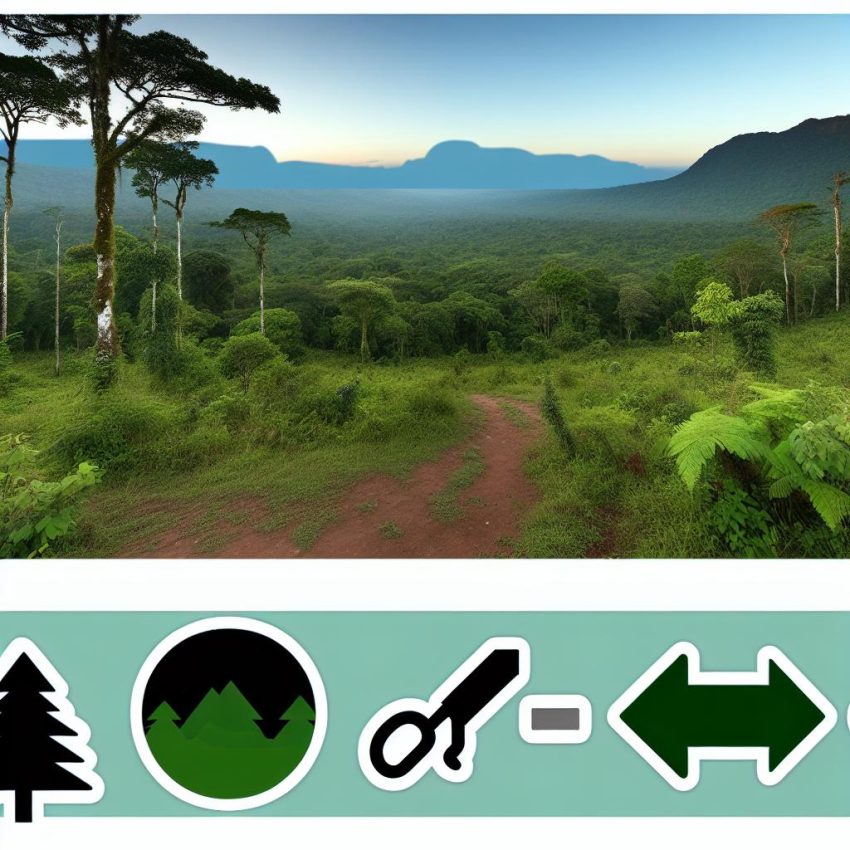Copo National Park Overview
Copo National Park, located in the Santiago del Estero Province of Argentina, serves as an essential conservation area dedicated to protecting the unique flora and fauna of the region. The park covers approximately 114,250 hectares and is renowned for its diverse ecosystems, which include dry forests and semi-desert areas. These ecosystems are crucial for maintaining biodiversity and supporting a wide variety of plant and animal species.
Geographical Features
Copo National Park is situated in the Gran Chaco region, a large lowland area that spans across several South American countries. This region is characterized by an arid climate and predominantly flat landscapes. The Chaco’s environment is largely influenced by its sparse and sandy soils, which play a significant role in shaping the ecological dynamics of the park.
The park experiences a climate with marked temperature variations throughout the year. Summers in the region can be exceptionally hot, while winters tend to be mild, providing a distinct setting that supports different life forms adapted to these conditions. The unique geographical features of Copo National Park contribute significantly to its ecological diversity and make it a critical area for conservation efforts.
Flora
The flora of Copo National Park is primarily composed of species that are well-suited to arid conditions. One of the most notable plants in the park is the *quebracho*, a type of hardwood tree that is prized for its durability and resilience. The *quebracho* plays an essential role in the park’s ecosystems, acting as a habitat for various organisms and contributing to the local environment’s stability.
Another significant plant species found in the park is the *algarrobo* tree. Known for its capacity to survive in harsh climates, the *algarrobo* is an integral part of the park’s flora. The tree’s fruits and leaves provide sustenance for numerous animal species, ensuring a stable food supply within the ecosystem.
In addition to trees, Copo National Park is home to a variety of cacti. These plants have adapted well to the dry climate, with specialized structures to store water and reduce transpiration. The presence of cacti in the park not only adds to the biodiversity but also provides a crucial food source and habitat for wildlife.
Fauna
Copo National Park is a habitat for a wide range of animal species, including some that are considered threatened or endangered. One of the most notable residents of the park is the *jaguar* (*Panthera onca*). This apex predator plays a vital role in maintaining the ecological balance within the park, controlling populations of other species and contributing to biodiversity.
The *tatú carreta*, or giant armadillo, is another significant inhabitant of the park. Known for its impressive size and unique burrowing habits, the giant armadillo is an important species for the ecosystem. Its burrows provide shelter for other animals, and its feeding practices contribute to the distribution of seeds and nutrients.
Bird species such as the *crowned solitary eagle* also call Copo National Park home. This bird of prey is an essential part of the avian population, contributing to the control of small mammal and reptile populations. Conservation efforts within the park aim to protect these and other species, highlighting the importance of maintaining biodiversity in the region.
Conservation Efforts
The establishment of Copo National Park primarily aims to conserve its unique environments and protect the diverse species that inhabit them. Management strategies focus on preserving natural habitats, combating the spread of invasive species, and minimizing human impact on the environment.
Ongoing research and monitoring programs play a crucial role in supporting conservation efforts. By studying the park’s ecosystems and the species that inhabit them, conservationists can develop informed strategies to address threats and maintain biodiversity. These efforts ensure that Copo National Park remains a sanctuary for its native species and continues to fulfill its intended role as a conservation area.
Visitor Guidelines
To preserve the ecological integrity of Copo National Park, visitors are encouraged to follow specific guidelines during their visits. These guidelines include staying on designated trails to minimize impact on the natural environment and avoid disturbing wildlife. Practicing leave no trace principles, such as carrying out all trash and minimizing the use of natural resources, is also highly recommended.
These measures are essential in maintaining the park’s pristine condition and ensuring that it remains a haven for future generations. By adhering to these guidelines, visitors contribute to the ongoing conservation efforts and help protect the diverse ecosystems that define Copo National Park.
Access and Facilities
Copo National Park is accessible from several nearby towns, providing easy entry for visitors interested in exploring its natural beauty. Visitor facilities within the park include informational centers and guided tours designed to enhance the visitor experience. These resources offer valuable insights into the park’s ecological significance, conservation initiatives, and the species that call it home.
For more detailed information on Copo National Park, visitors can explore the official site of Argentina’s national parks. On this site, you will find detailed maps, visitor resources, and information on the park’s ongoing conservation projects. The official site can be accessed through the following link: Argentina Turismo.
In conclusion, Copo National Park is a critical conservation area dedicated to protecting a diverse range of species and habitats. Its establishment is a testament to Argentina’s commitment to preserving natural environments and promoting sustainable interactions with nature. By prioritizing conservation and encouraging responsible tourism, Copo National Park serves as a model for ecological stewardship and biodiversity preservation.

